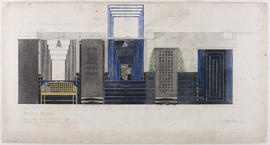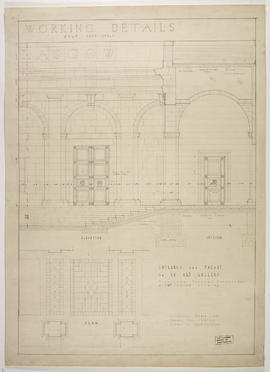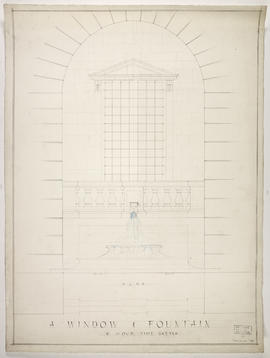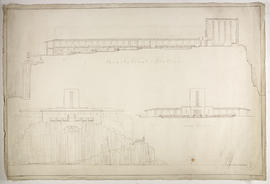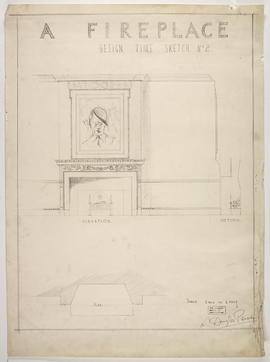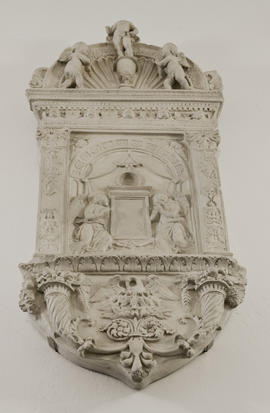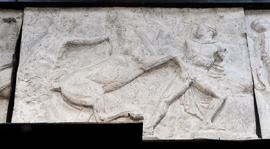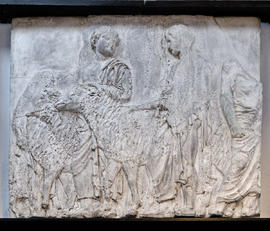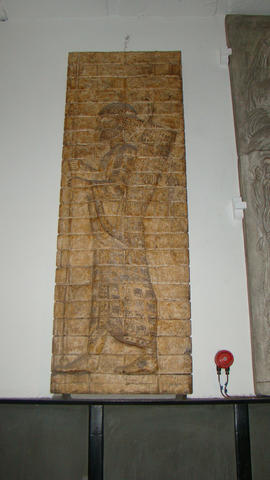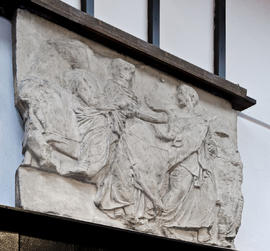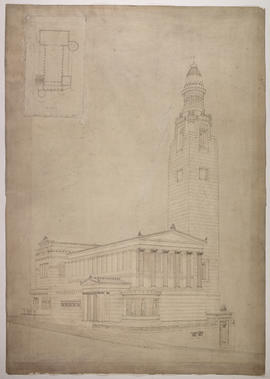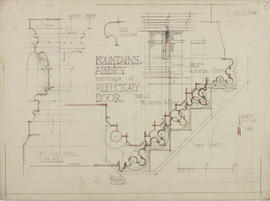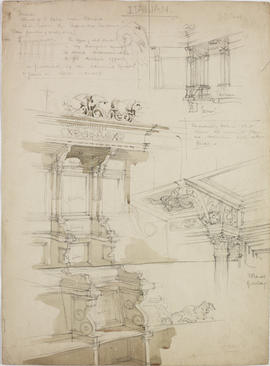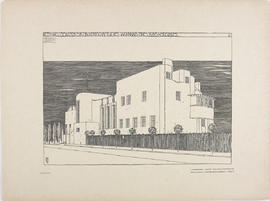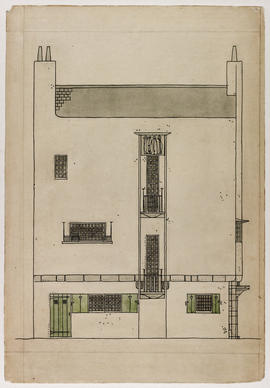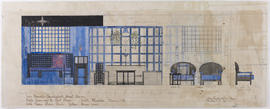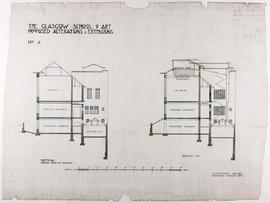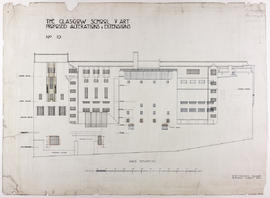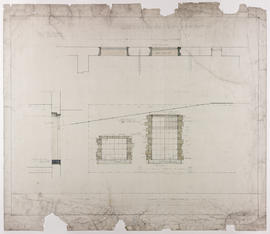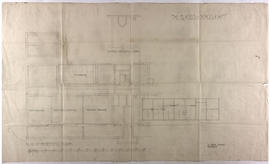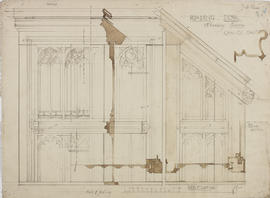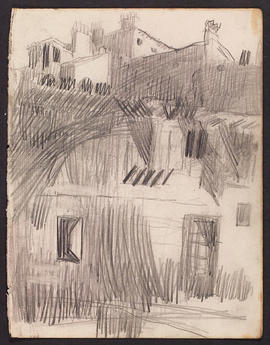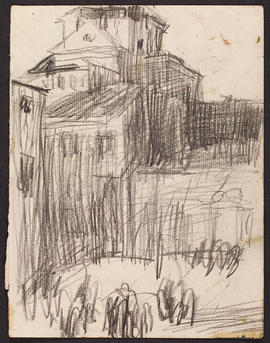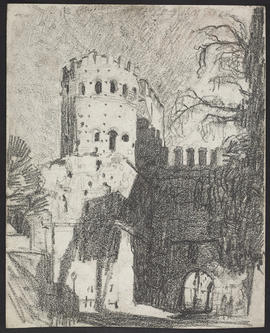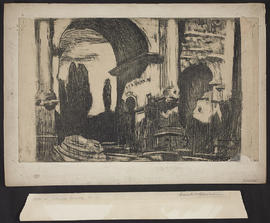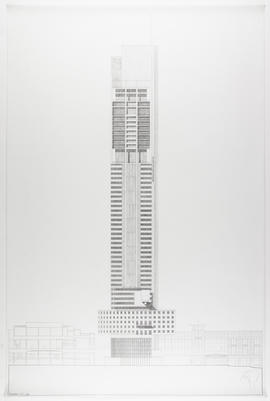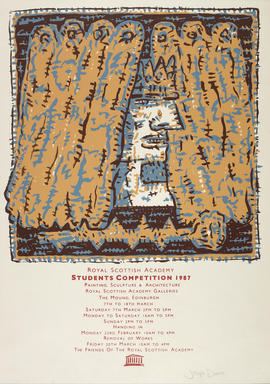Design for the Dug-Out, Willow Tea Rooms, Glasgow
- MC/G/49
- Item
- 1917
Design for the staircase and vestibule, West Elevation, The Dug-Out, Willow Tea Rooms, Sauchiehall Street, Glasgow. Miss Cranston and her husband Major Cochrane commissioned Mackintosh to redesign the interiors of their home Hous'hill at Nitshill. Mackintosh designed several suites of furniture in 1904 and more pieces in 1909. Stripes are the dominant motif in the decorations, in the panels over the settle and between the doors where they are carried over the ceiling as in the guest bedroom at 78 Derngate. The lampshades are also similar to those used in this bedroom. (Roger Billcliffe). The lattice work recalls the hall at Derngate, but here it is used as an open screen rather than with solid or glazed panels. The only furniture that has been traced is the chair at the writing desk and the small table.
Mackintosh, Charles Rennie

